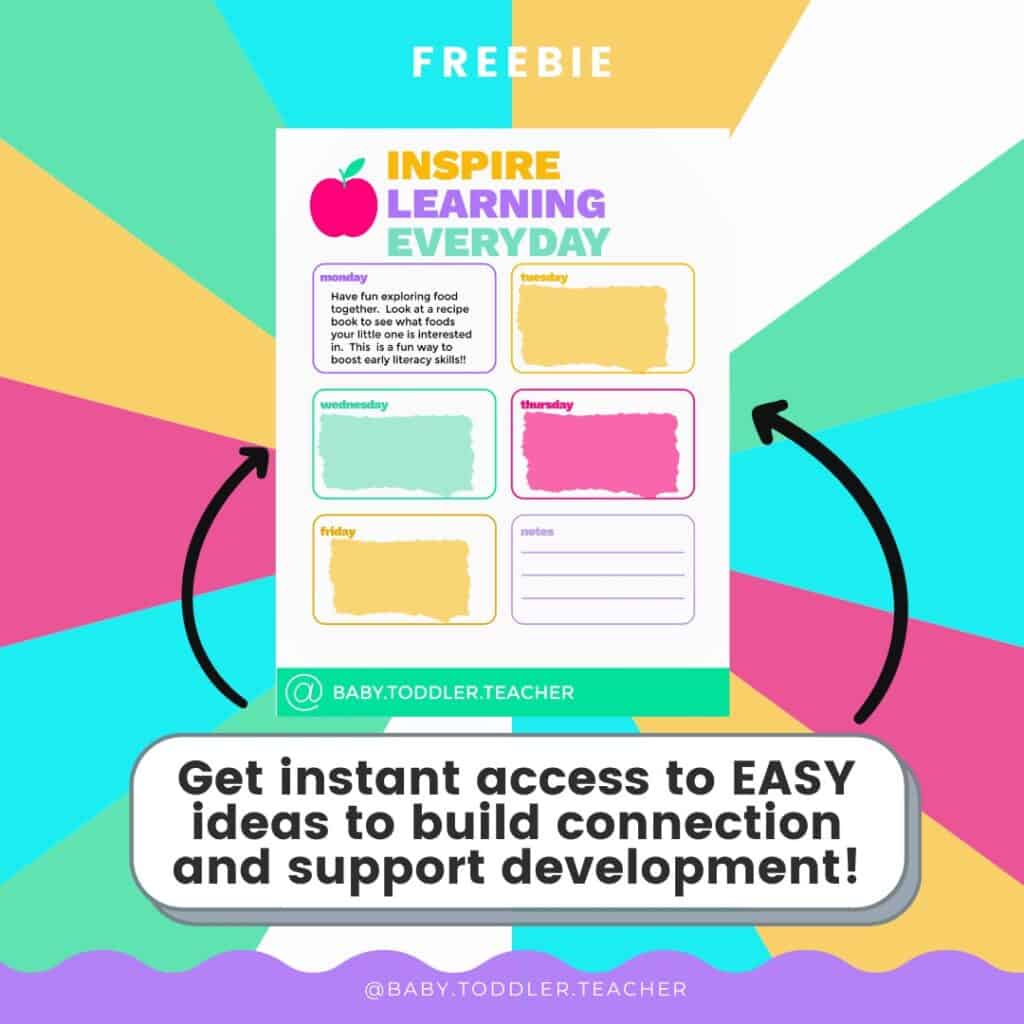When do babies typically start walking?
This is a common question among parents.
First steps are something that many parents are patiently awaiting.
They are a major marker that your baby is now transitioning into toddlerhood.
As a developmental therapist I have seen many children go from crawling to walking.
They all tend to do it a bit differently!
In this post we will cover everything you need to know about your baby’s first steps.
Here is what you can expect to learn from reading this article:
- Walking Milestones: What to expect
- How to Help Your Baby Learn to Walk
- My baby isn’t walking. Should I be concerned?
- Why do some babies start walking early?
- Is toe walking normal?
- Best Toys to Help Your Baby Learn to Walk
- Do walkers help babies walk?
- When do babies start walking and talking together?
- Printable Developmental Checklist for 12-36 Months
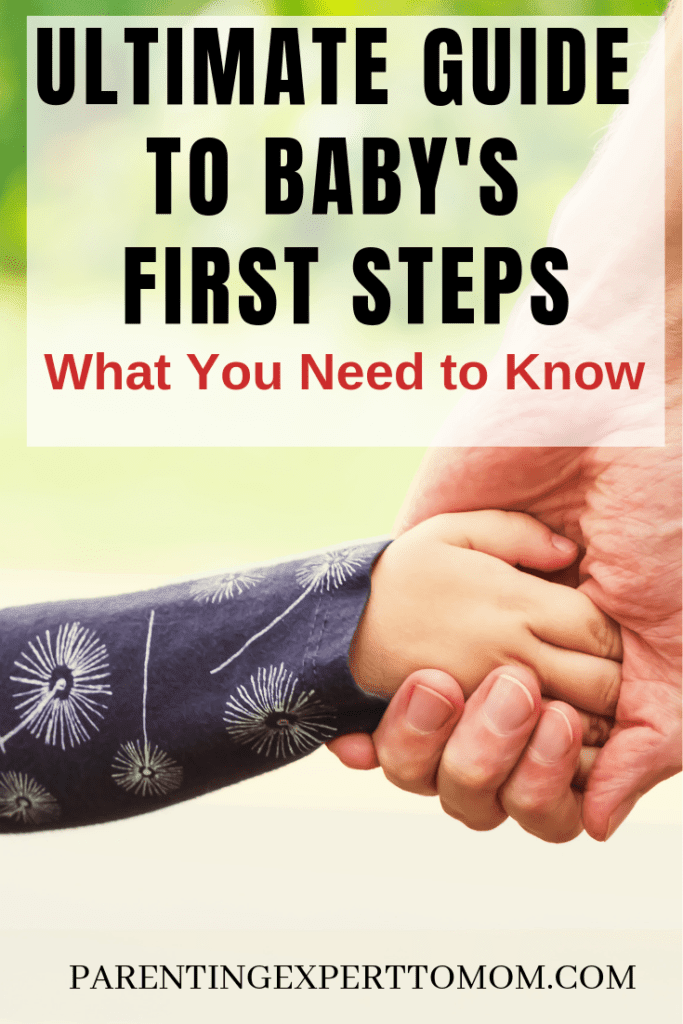
(This post contains affiliate links. To read our full disclosure policy click here.)
There are many ways to help your baby learn to walk from birth on up. One of the best things you can do is give them lots of floortime and keep them out of baby seats or chairs.
This will help them explore a variety of positions that will lead to walking.
Yes! Walking is one of the skills we look for in the area of gross motor. It usually happens slightly before or after your child turns one.
Baby walkers are not recommended as they are a safety hazard. There is also no evidence that they actually help babies learn to walk.
When Do Babies Start Walking?
Walking Milestones: What to Expect
There are many milestones that happen before your baby starts to walk.
All babies are different so they do not meet these milestones at the exact same time and they can happen in slightly different orders as well.
Motor skills are what your baby uses to move and navigate the world. They are usually broken down into to two groups:
Gross Motor Skills: The skills needed to move and coordinate the large muscle groups.
Some of the skills included in this group are rolling, crawling, standing, and walking.
Fine Motor Skills: The skills that coordinate small muscle movements and hand eye-coordination.
Some of the skills included in this group are reaching, grasping, clapping, and scribbling.
Here is a quick overview of some of the milestones you can expect before your baby walks:
Rolling is Your Baby’s First Way to Move
Rolling from tummy to back typically happens sometime between 2 to 5 months.
Rolling from back to tummy usually occurs from 5-8 months.
As you can see there is a large range of “normal” when it comes to when your baby will roll.
You may be surprised to find out that some babies will actually roll from back to tummy first…which is completely opposite from what is expected.
My daughter was one of those babies that could roll from her back to tummy at around 3 months and rolling from tummy to back came later.
Sitting Strengthens Your Baby’s Core Muscles
Did you know that sitting uses many of the same muscles that are needed for walking?
These core muscles are important for many of your baby’s movements.
If you think about it when you are sitting you are using a lot of strength to balance and remain upright.
In order to walk we need even more core strength and balance so it makes sense that it happens before we learn to walk.
So when do babies sit? You can expect to see them be able to sit with support from about 3-5 months.
They should gain the strength to sit unsupported (still using their own hands to help balance) somewhere between 5-8 months.
Crawling SOMETIMES Comes Before Walking
Have you ever heard of a baby skipping crawling and go straight to walking?
It isn’t very common…but it does happen!
Babies crawl usually between 7 to 10 months. You will want to make sure your house is baby proofed very well before your baby starts to crawl as they are quite curious and can get into a lot!
Pulling to Stand
Once your baby pulls to stand you know walking will be happening in the near future.
Your little one will use your hands to pull to stand or really anything they can find!
My daughter just stated to do this and she likes to practice pulling up…and sitting down. She does this over and over again!
This type of repeated practice is how a baby learns new skills.
You can expect your little one to do this sometime between 6 to 10 months.
Read our complete guide on baby standing milestones to find out everything you need to know about that!
Cruising Furniture
After pulling to stand on furniture your baby will attempt to get from one side of the couch to the other.
They do this by holding on and side stepping across also known as “cruising.”
You can expect your child to start cruising furniture and whatever else they can reach at about 9-13 months.
Taking Steps While Holding Hands
Your baby will need support as they learn to take those first few steps.
One stage that they go through is using your hands to help them hold themselves up while taking steps.
Your baby may seek you out for this type of walking support somewhere between 10-12 months.
If your back is getting sore from giving your baby this type of support you can try walking wings (like these.) They give support and require you to do less bending.
Walks Without Support
The day has come and your baby is taking steps solo.
This big milestone will take place at different times for different tots but usually you can expect them to walk without support sometime between 13-15 months.
Walking Up and Down Stairs Using a Railing
Your child will learn to go up and down stairs at first by creeping up them.
As they get stronger, they will be able to step up and put both feet on a step instead of alternating feet which comes later.
You can expect them to use steps with the support of a railing and both feet on the step sometime between 15-18 months.
They will be able to alternate their feet when walking upstairs at around 30-34 months.
Running
whether you are ready or not, once your little one has mastered walking they will soon try to run.
You can expect your toddler to start running without frequent falling at around 18-24 months.
How Can I Help My Baby Learn to Walk
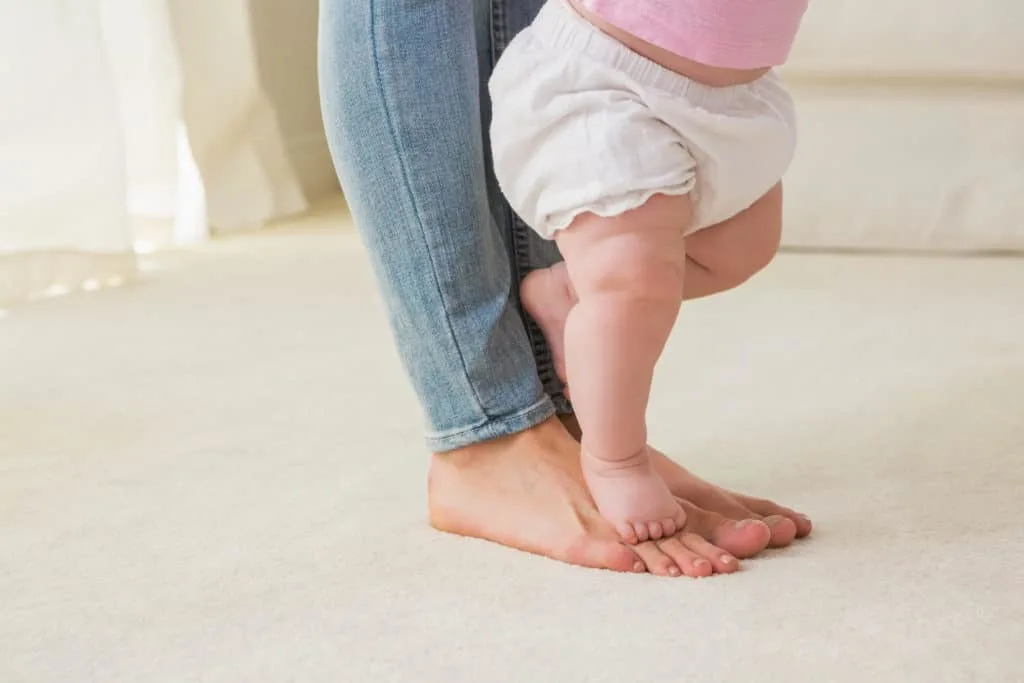
There are lots of things you can do to help your baby gain the muscles that they need to walk. Let’s take a look at a few different ways to get them stronger!
Play in Multiple Positions
Babies need to play in different positions in order to gain the muscle strength they need to become mobile.
From your baby’s very first days you will want them to play on their back and supervised on their tummy. You can read more about how much tummy time your baby needs here.
Barefoot is Best
Keeping your baby barefoot is one of the best ways to help them walk.
When they have no shoes or socks on they are allowed to feel the ground and use all of the muscles in their feet to maintain balance.
The more you can keep your baby sans shoes the better!
However, if you need some shoes due to cold temperatures or outings try once with soft soles (these are the ones we used) that allow your baby to still feel the ground some.
Give Them the Support They Need
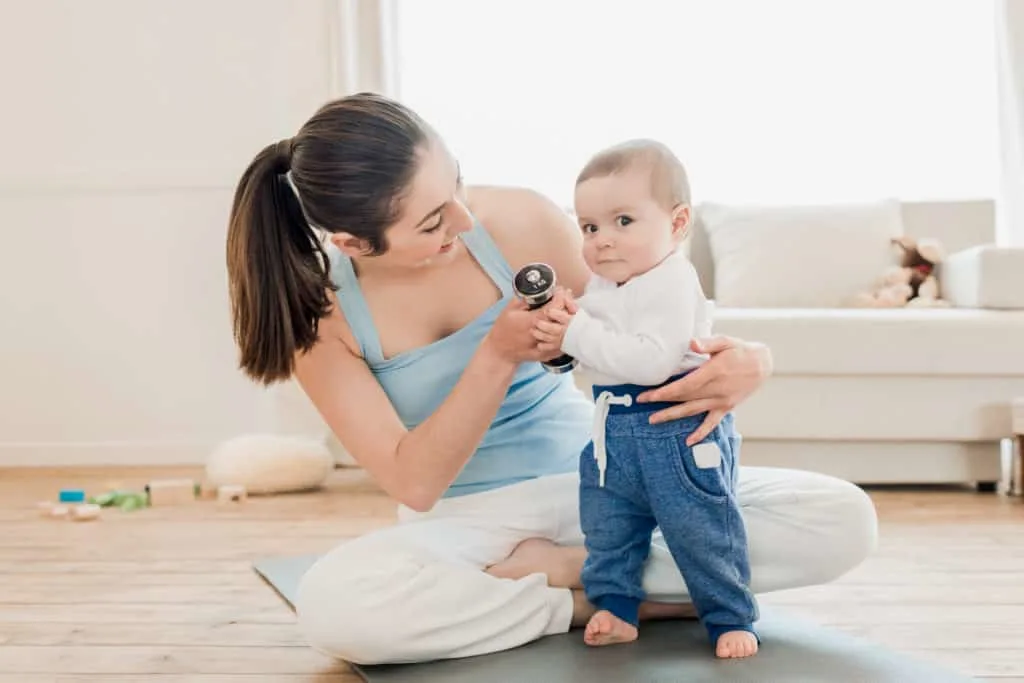
At first your baby will need a lot of support when in a standing position.
As they get stronger and gain balance they will need less.
Give them the amount of support they need…not too much and not too little.
You may start of holding both hands when they are learning to take steps.
As they get stronger give them less help by using only one hand.
Sometimes babies just need to know you are there and actually don’t need the physical support to hold themselves up.
If this is the case try placing your hand on their shoulder instead of holding them up.
Provide a Little Motivation
Babies are more apt to take a few steps when there is something that they want!
Scoot back a bit and tell your baby to come to you while you hold out your arms.
Place a toy that they desire just out of reach and they may be motivated to find a way to get it.
Get creative with providing them motivation but don’t pressure them too much.
They have their own timeline and will take those steps when they feel ready.

Positive Support
Praise your baby when attempt to take a step or stand by themselves. These are exciting milestones on their walking journey and it can be fun to celebrate along the way!
Do not force your baby to stand or walk if they don’t want to. You do not want to form negative feelings toward learning to walk.
Give Your Baby the Opportunity to Walk
As a busy mom I know it can be more convenient and faster to just scoop up your little one to get them from point A to point B.
However, if you have a few extra minutes let them either walk with support or crawl.
This allows them time to move and practice the skills they are trying to master throughout your day.
The more opportunities they get, the stronger and more coordinated they will become.
Have a Safe Space for Practice
When your baby is learning to stand, walk, or crawl make sure you have a safe space for them to practice.
Baby proof your house when they enter new phases of movement as they will be able to reach different things that can get them into trouble.
You may want to consider getting a baby floor mat for crawling and walking to help protect them when falls happen.
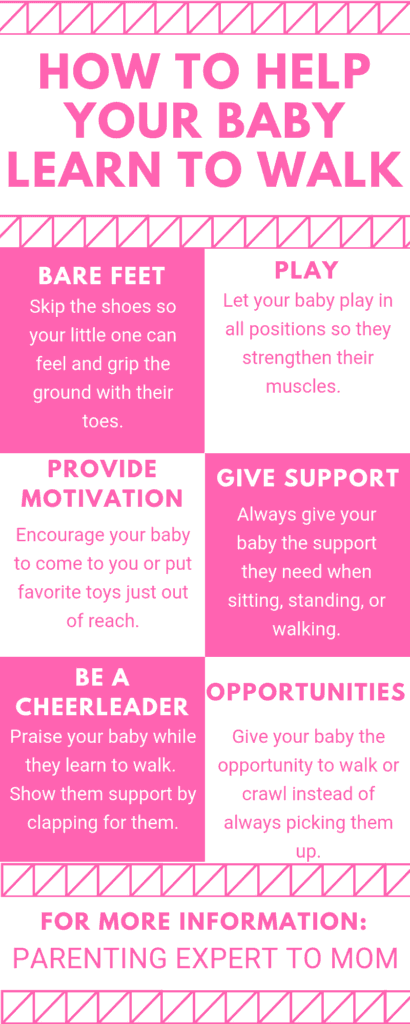
My baby isn’t walking. Should I be concerned?
If your baby is over 15 months and not close to walking you may want to check with your pediatrician or early intervention to make sure your little one is on track.
They will be able to give you some ideas and strategies on how to get your little one taking steps as well.
It can still be normal for your baby to walk later…every child follows their own timeline.
Always listen to your gut. If you EVER have concerns about your child’s development check with your doctor.
If you ever notice any of these gross motor red flags make sure to give your pediatrician a call:
- One side is stronger then the other
- Regression in skills
- Babies muscles seem very stiff and rigid
- Babies muscles seem very loose and floppy
Why Do Some Babies Start to Walk Early?
Every baby is on their own timeline and for some that may mean walking early.
Babies that are very active and curious sometimes walk earlier then expected.
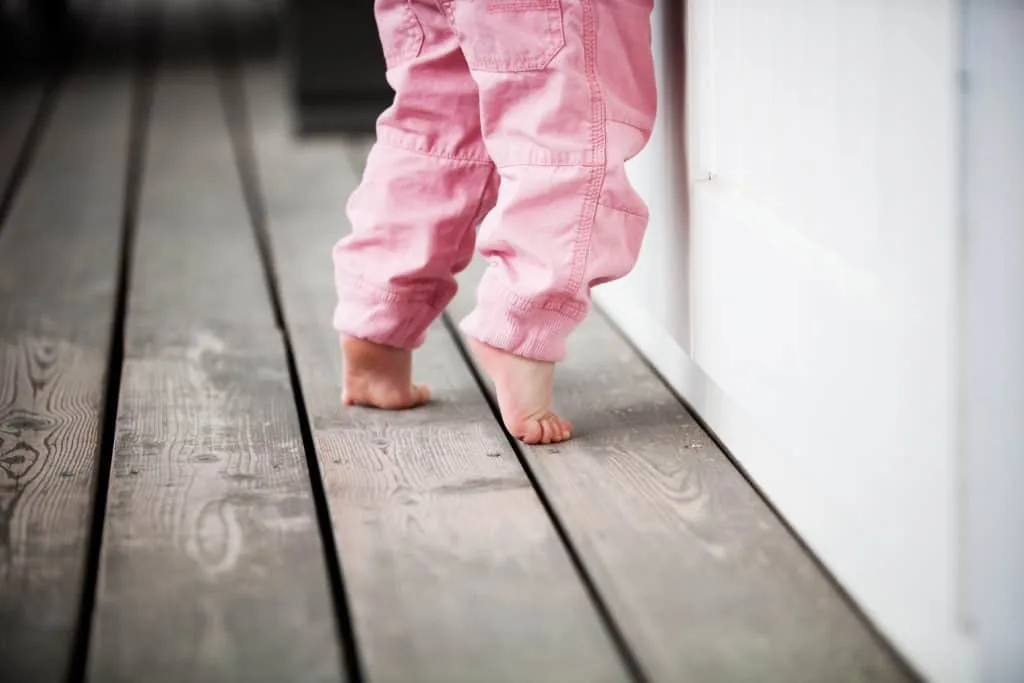
Is toe walking normal?
It can be perfectly normal for your child to be up on their toes at times when learning to walk.
Always check with your pediatrician if you think your baby is toe walking excessively.
You can read more about toe walking HERE.
Big Milestones Can Learn to Clingy Babies
Do you find yourself asking “why is my baby so clingy all of a sudden?”
Sometimes when babies are about to hit a new milestone they become a bit clingy. They are excited to be more independent…but it can also be a bit scary for them as well!
Best Toys to Help Your Baby Learn to Walk
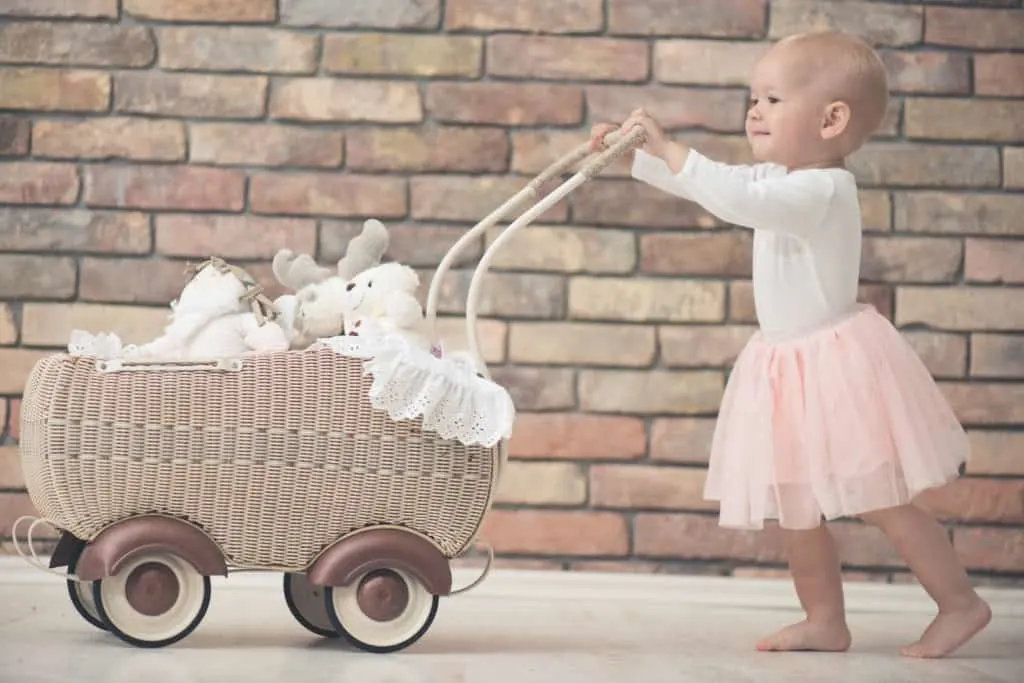
You really do not need any special toys to help your baby walk. You are their biggest learning tool! However if you are looking for toys that can help encourage skills that lead to walking, these are a few of my favorites:
Activity Cube
Activity cubes (like this one) are great because they promote standing and cruising which both lead to walking.
They promote play in all positions (sitting, standing, kneeling, etc.) which is helps your little one build muscles while having fun.
Activity Walker
We started to use our activity walker when my daughter was just starting to sit and we are continuing to use it as she learns to walk. One like this would work well.
Once your child is able to walk confidently this can be a fun toy for them to push around the house.
This toy is not meant to support your child while they learn to walk.
You need to provide them with the support they needed using your hands or walking wings (check them out here.)
Push and Ride Toys
We used a similar to to this when my son first started to walk. It is still a favorite for him as a toddler as he loves to scoot on it or push it outside. If you have space you could use this toy indoors, if not it is a great outdoor option.
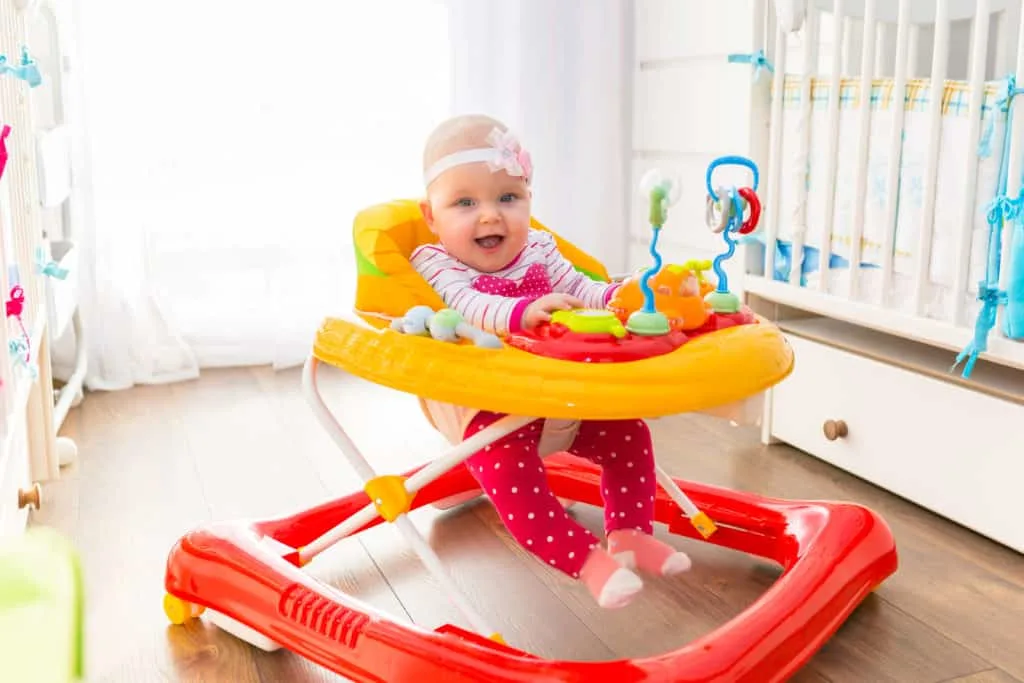
Do walkers help babies walk?
Putting your baby in a walker will not help them learn to walk and can be dangerous.
They are not beneficial and there is a high risk of injuries and accidents when infants use them.
You can read more about the dangers of baby walkers HERE.
When do babies start walking and talking together?
Walking and talking together can be a challenge for toddlers. You may notice your child put a halt on their language skills while they are learning to walk somewhere between 11-15 months. This is very common as they are very focused on mastering their walking skills.
You can expect them to start jabbering and babbling while taking steps at around 15 months or when they become more confident at walking.
Did you find this article helpful? Follow us on Facebook for more parenting tips and advice!
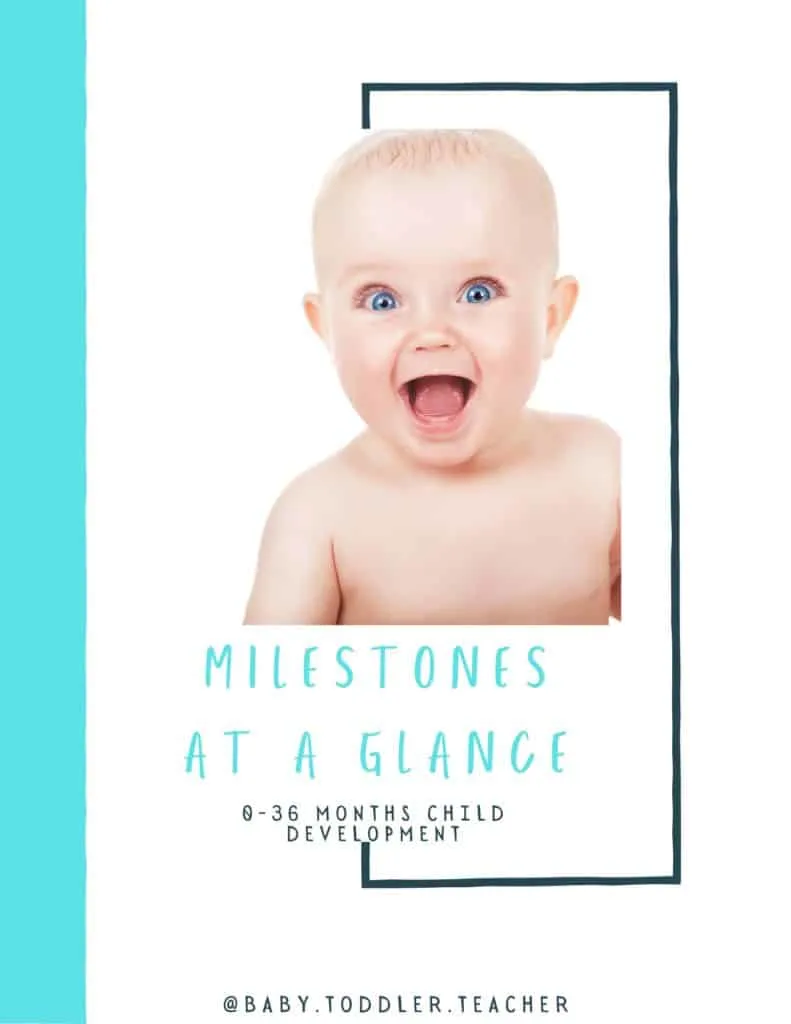
Grab your FREE Milestone Guide HERE.
Related Posts You Will Enjoy
Baby Standing Milestones: Everything You Need to Know
The Best One Year Old Activities
Babies Waking Too Early: How to Get Them Sleeping Later
Strategies to Encourage Language Development in Early Childhood
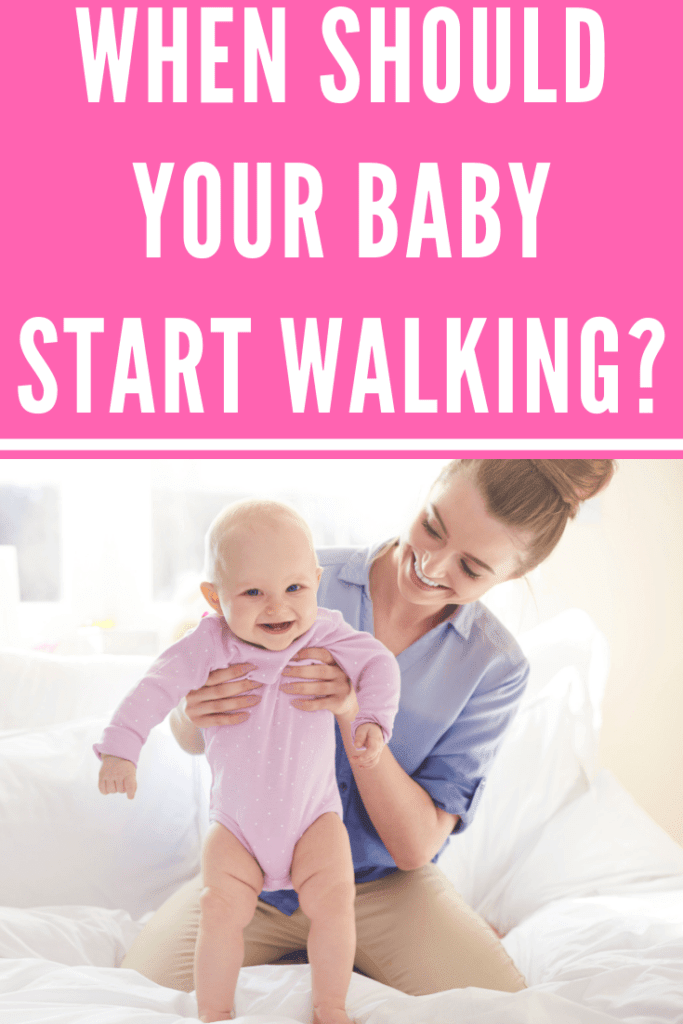

Kayla O’Neill has a master’s degree in education as well as a bachelor’s degree in special education with an emphasis in early childhood education. She has been working as a developmental therapist with babies and toddlers in early intervention since 2012. She is also a mom with two young children.
